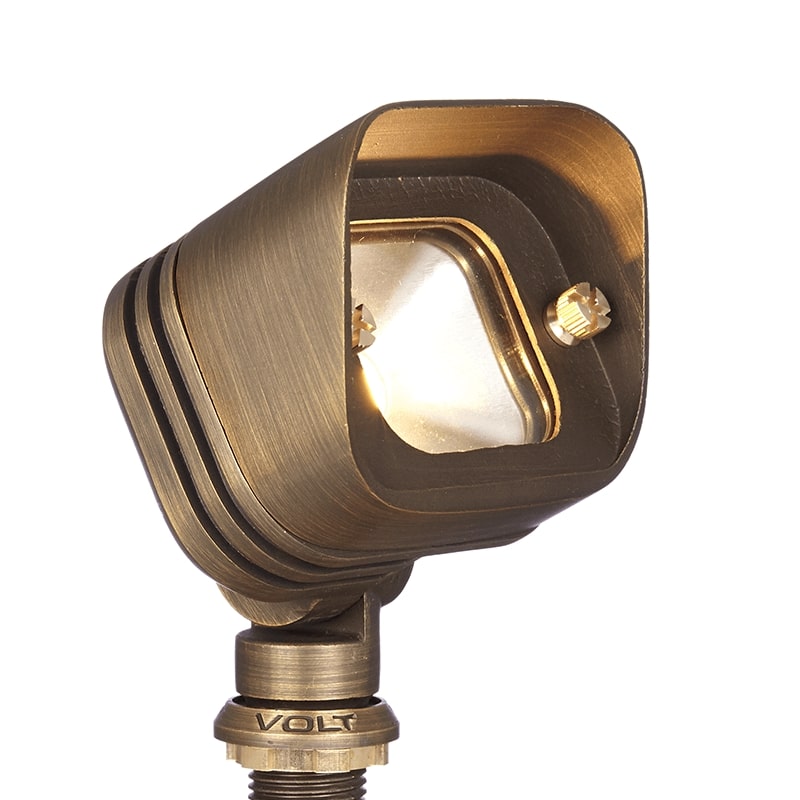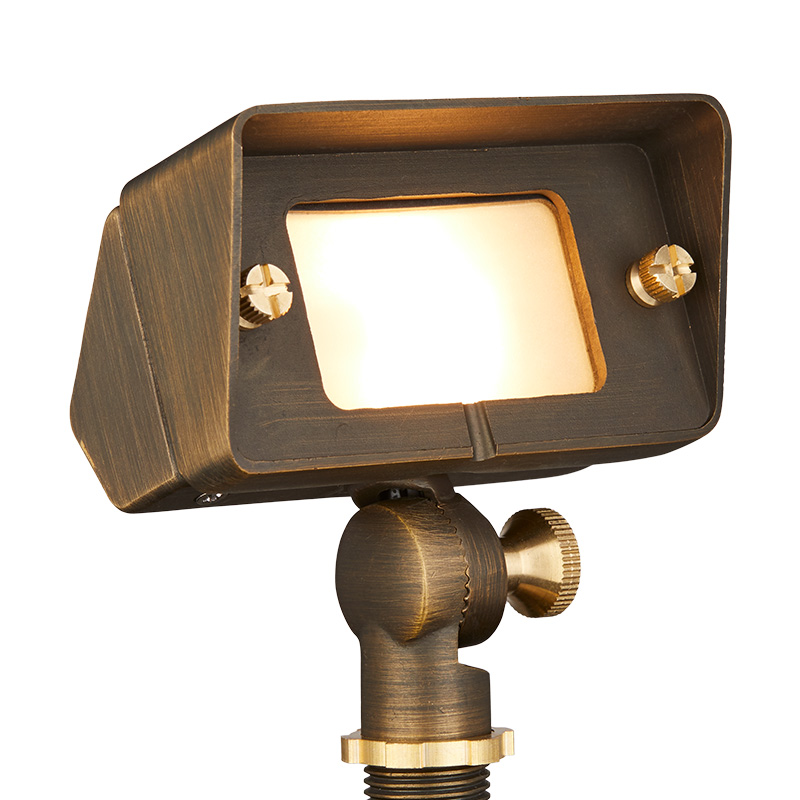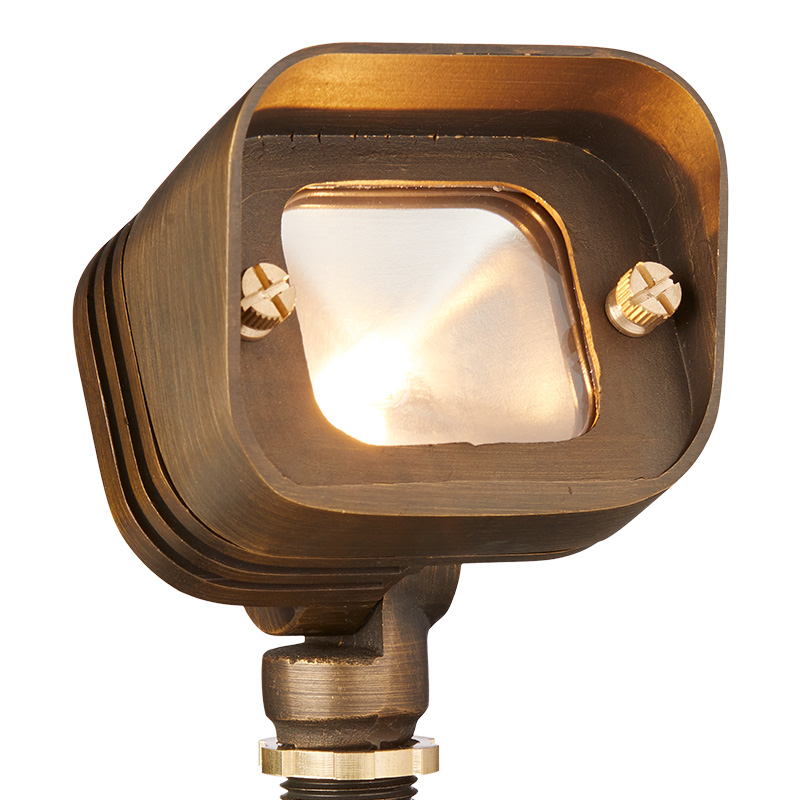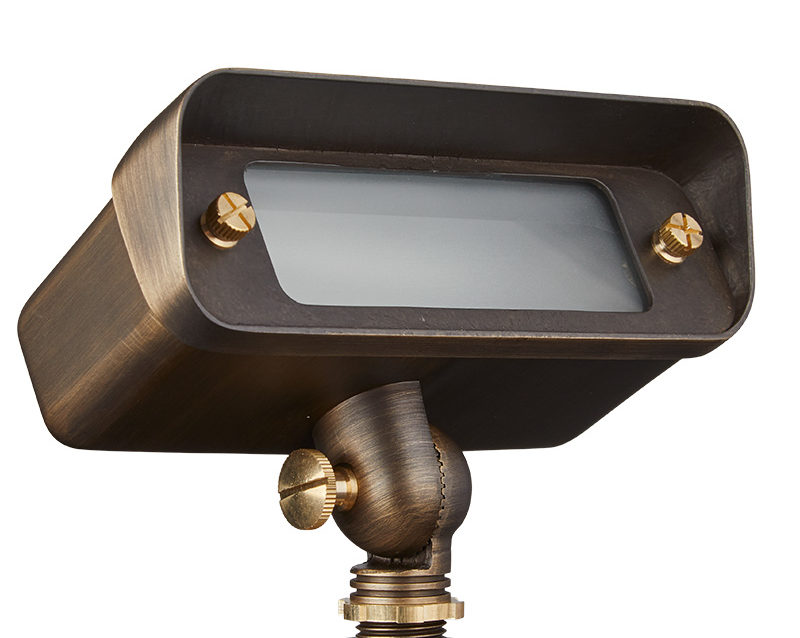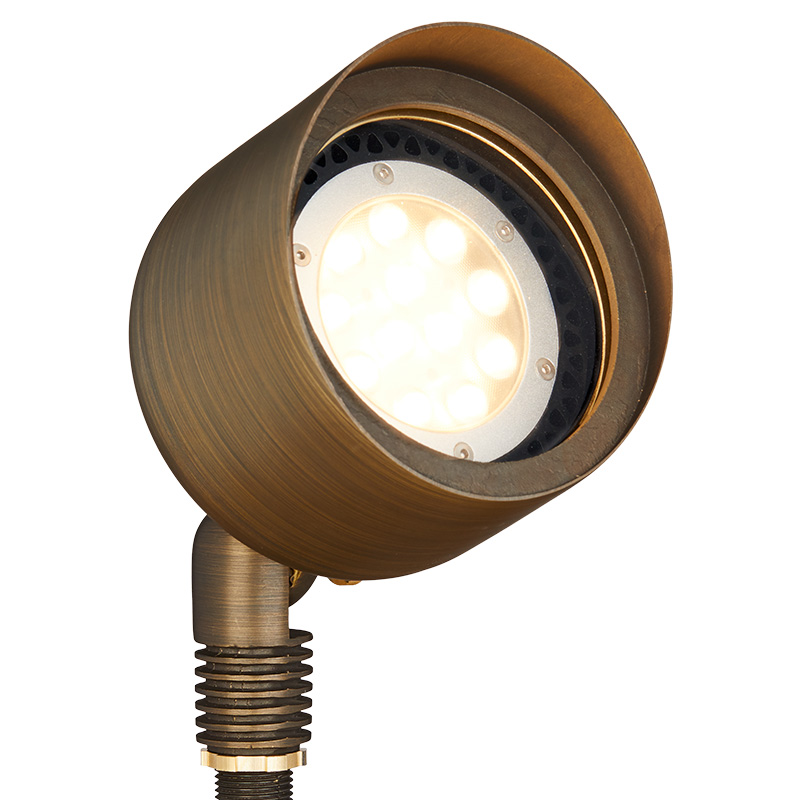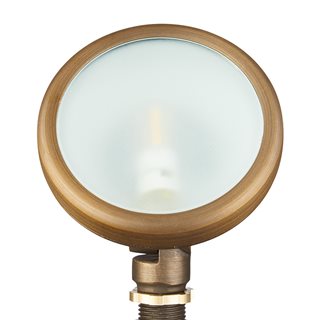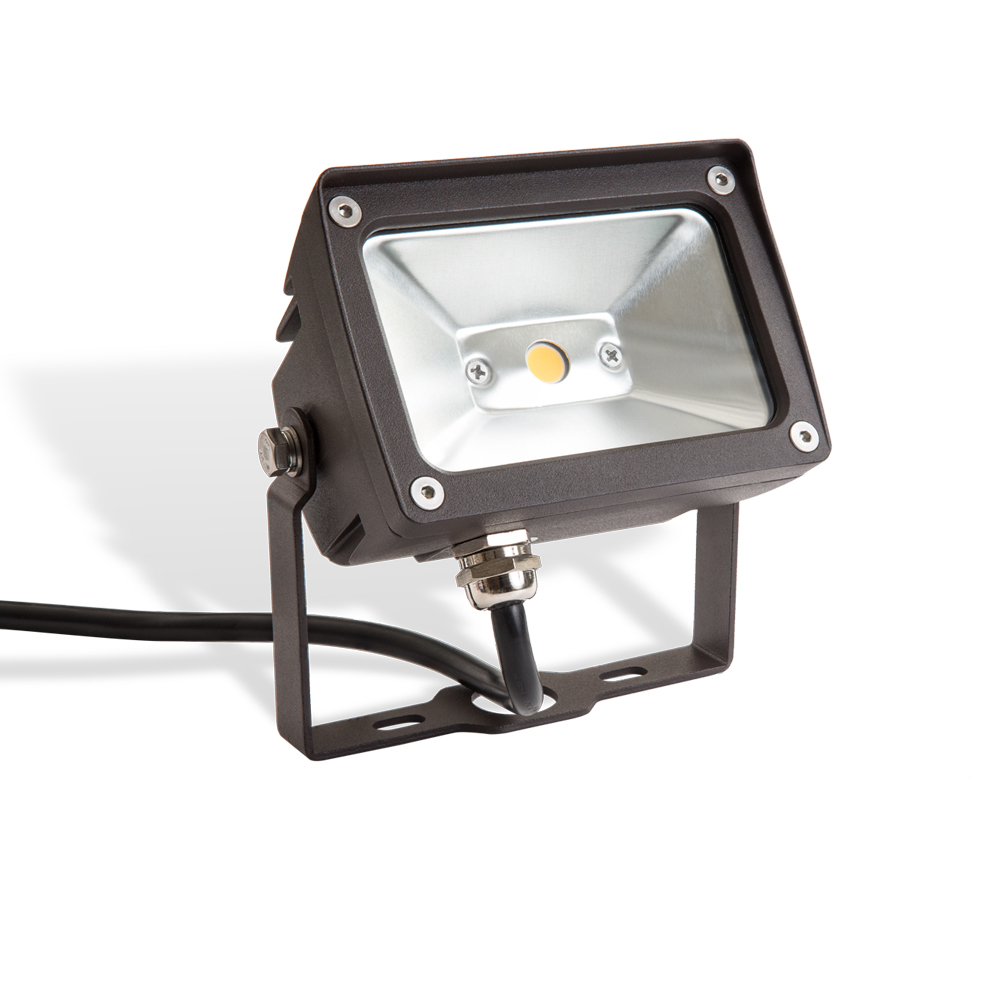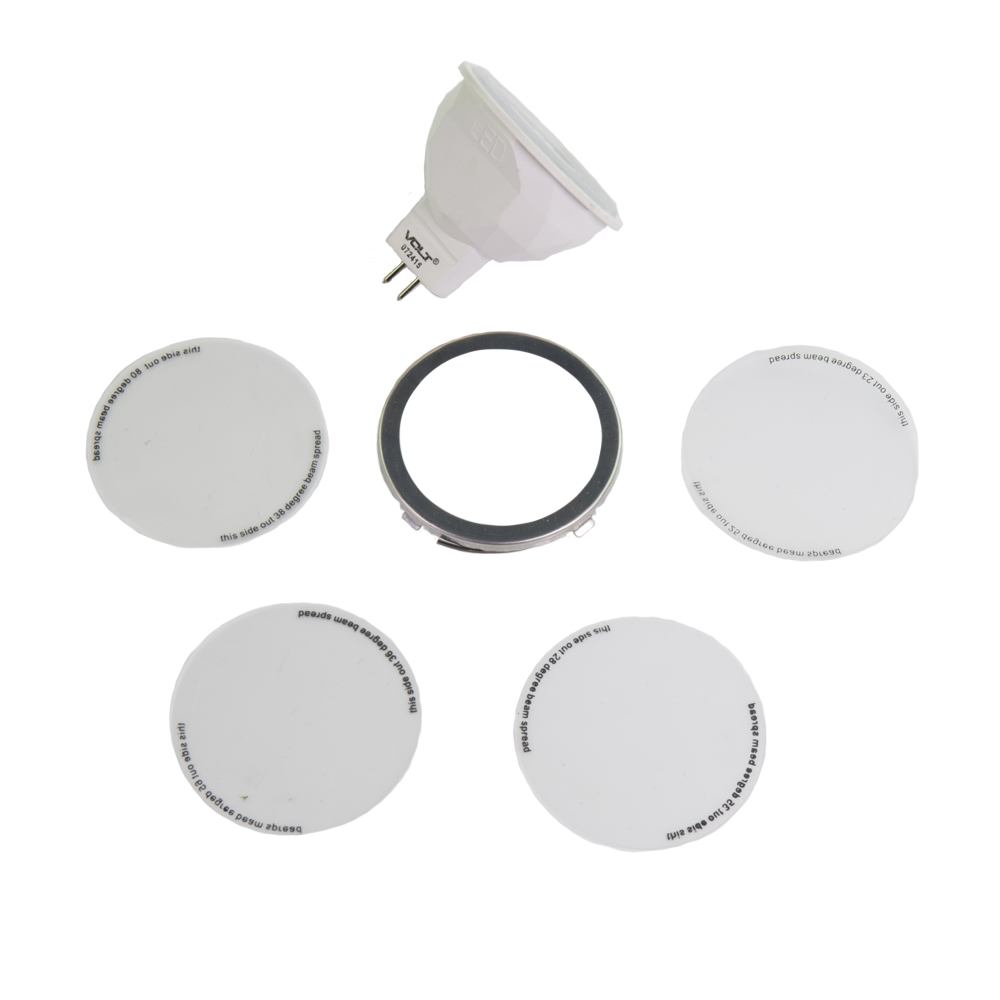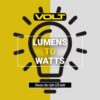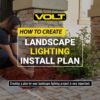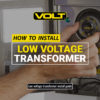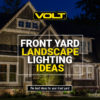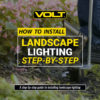What are Flood Lights?
Just as a flood describes water overflowing its boundaries, flood lights are luminaires that spread light beyond the boundaries of other (more focused) lights. A flood of water is usually a problem, but a flood of light can be either good or bad, as we’ll explain.
Flood lights include a range of fixtures of various shapes and sizes. The common factor is a very wide beam angle – typically in the range of 60º to 120º. (Note that the term “flood” is used differently when describing lamps or bulbs – see side detail.)
The Good and the Bad – Night and Day
One key to successful landscape lighting is to illuminate objects in ways that create a beautiful nighttime scene. If the designer floods a wall with light, then the look is more daytime than nighttime; that would be bad. If a flood light fails to produce a nighttime effect, use a spotlight instead.
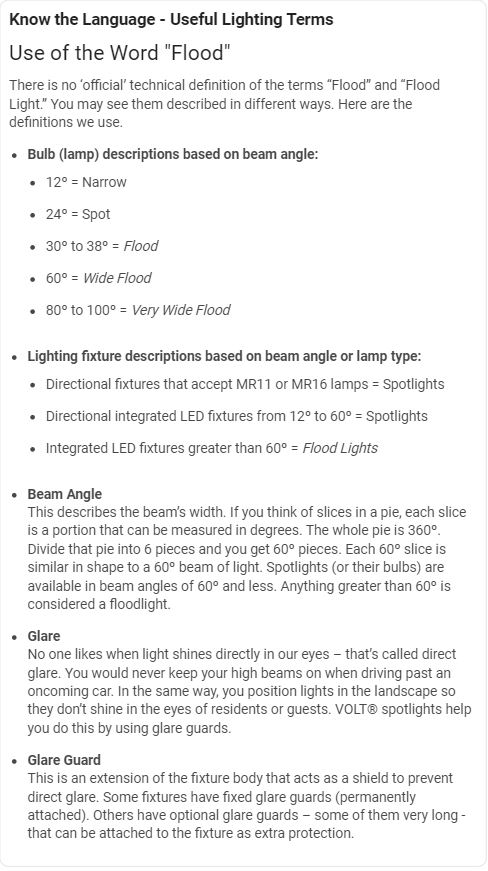 Always. . .
Always. . .
- Minimize Glare
Because they have such a wide beam, keep residents and visitors in mind. Install flood lights so they will not project into the viewers’ eyes. Some of our lights have additional glare guards to minimize this problem. - Use the Least-Bright Lights That Do the Job
VOLT® offers a wide range of sizes and light outputs. When it comes to landscape lighting, less is more – keep light levels low.
Where To Use Flood Lights
- Second Stories
Mount flood lights on gutters or roof edges to illuminate second stories. (See the VOLT® Gutter Mount.) - Retaining and Freestanding Walls
Unlike house facades, these long low walls can be washed with light. There are enough nearby dark surroundings to ensure a nighttime feeling. Select flood lights and position them to use as much of the projected light as possible, without spilling too much light into the sky. Recommended product - Garden Beds
Stake-mounted spotlights are not well suited to illuminate garden beds or low-lying plant material. Instead, use small flood lights to illuminate these plant regions. Position the lights so they do not put hot spots on individual plants. Recommended product - Bushes and Small Trees
Flood lights are ideal for these plants. The lights can be positioned fairly near the plant’s base without creating a hot spot. Recommended product - Stands of Multiple Trees
When you want to illuminate a stand of several trees or a line of trees, use a few powerful flood lights instead of many spotlights. This greatly reduces the number of fixtures needed. Note: this is a good technique for trees along the back or sides of a property; it’s not good for trees in in the midst of a yard since these powerful floods may create a glare problem for residents and guests. Recommended product - Other Landscape Regions
For sitting areas, decks, patios or lawns, use flood lights mounted from above – but only when very wide coverage is needed. Be sure to mount them at an angle greater than 45º from horizontal, and at a height greater than 20 feet. Recommended product - Commercial Use – Signs, Facades, Public Areas
VOLT® produces flood lights in both low voltage (12V) and line voltage (120V). Both types are suitable for commercial applications such as illuminating signs, facades and public use areas. Other popular lights for commercial use include wall packs and solar security lights. Recommended 12V products and recommended 120V products
Where Not To Use Flood Lights
- House Sidings
In most cases, instead of flood lights, select spotlights with 60º beam angles for house sidings. They produce wide, conical beams that can be positioned between windows. The resulting nighttime effect is a symmetrical pattern of light and dark across the house. If the house were flooded with light, then it would look to be daytime – not nighttime. Recommended product
Exceptions: When It’s OK to Use Flood Lights on Sidings
-
- When the light will be projected through plant material (shadow effect). The resulting shadows provide enough light/dark contrast to evoke nighttime.
- When the light will be projected behind unlit plant material (silhouette effect). Again, the dark foreground speaks to the night.
- When the wall is highly textured, such as rough stone or brick. The textures result in dark shadows so the contrast is night-like.
VOLT® Flood Light Styles
Integrated LED Gentle Splash
With extremely durable construction and an integrated high-power Cree® LED, this flood light projects 250 lumens. Ideal for illuminating signs, walls and plant material. There’s no bulbs to change, but the clear glass lens can be replaced by diffusion or frosted lenses.
Gentle Splash Cast Brass Flood Light & Wall Wash
The most compact of our cast brass floodlights is ideal for illumination of small to medium objects and landscape features such as mailboxes, pillars, and sections of walls and garden beds. This lamp ready fixture is compatible with bi-pin bulbs.
Integrated Big Splash
The brightest of our cast brass floodlights features an integrated high-power Cree® LED light source that projects an impressive 500 lumens. Ideal for illuminating signs, walls and plant material.
Wide Splash R7S Flood Light
Our first lamp-ready fixture that can be manually dimmed, the Wide Splash utilizes an LED or halogen R7S bulb that “floats” within the fixture body and can be rotated to dim and adjust the light output of the fixture (380 lumens max., can be dimmed to 80 lumens). The Wide Splash is made of solid cast brass and has a wide profile to allow for a broad area of illumination. Its frosted lens diffuses and softens the light output to prevent chaotic shadowing effects.
PAR36 Flood Lights
These lights use replaceable PAR36 lamps – available up to 60º beam angle. They do, however, come with frosted and diffusion lenses that can widen their beams considerably. Also, because the lamps are very wide (about 6”), the wide part of the beam starts lower than with spotlights of the same beam angle. Because the beam of our Big PAR36 Flood Light is very wide at the bottom, it is ideal for up-lighting a low, wide bush. Even better, PAR36 flood lights are also available as well lights, so their wide beams start at ground level. For example, see our Ground Hog PAR36 Well Light.
Cast Brass Round Wall Wash
This sleek and compact brass fixture for floodlighting and wall washing has a round shape and frosted lens that create an extra-wide highly diffuse beam with soft edges. It’s ideal for natural, understated illumination of walls without the cone-shaped patterns produced by spotlights.
Rectangular LED Flood Lights with Yoke Mounts
This series of flood lights all feature LEDs built into the fixture body. They project much higher light levels than other types. This makes them ideal for applications that require high illumination levels such as up-lighting stands or lines of trees, and commercial or security applications.
Spotlights with Diffusion and Frosted Filters
Even though the maximum beam angle for our spotlights is 60º, most of them can be modified with the addition of filters. Several diffusion and frosted filters are available to widen the beams – effectively creating a flood light. The disadvantage is that these filters absorb and/or reflect a significant amount of light – reducing the useful light output and lowering the energy efficiency. It’s usually better to select a flood light made for the purpose.
